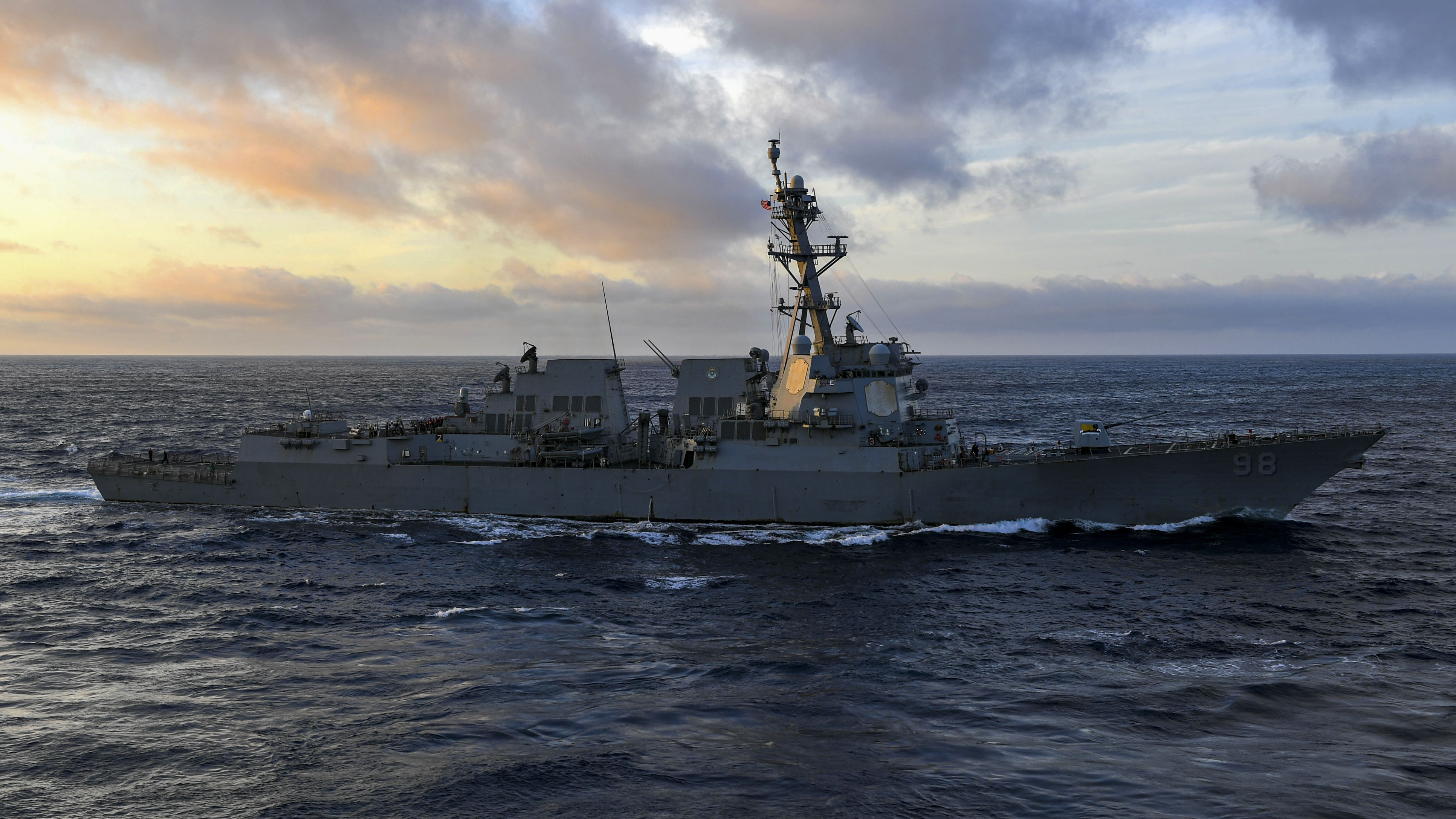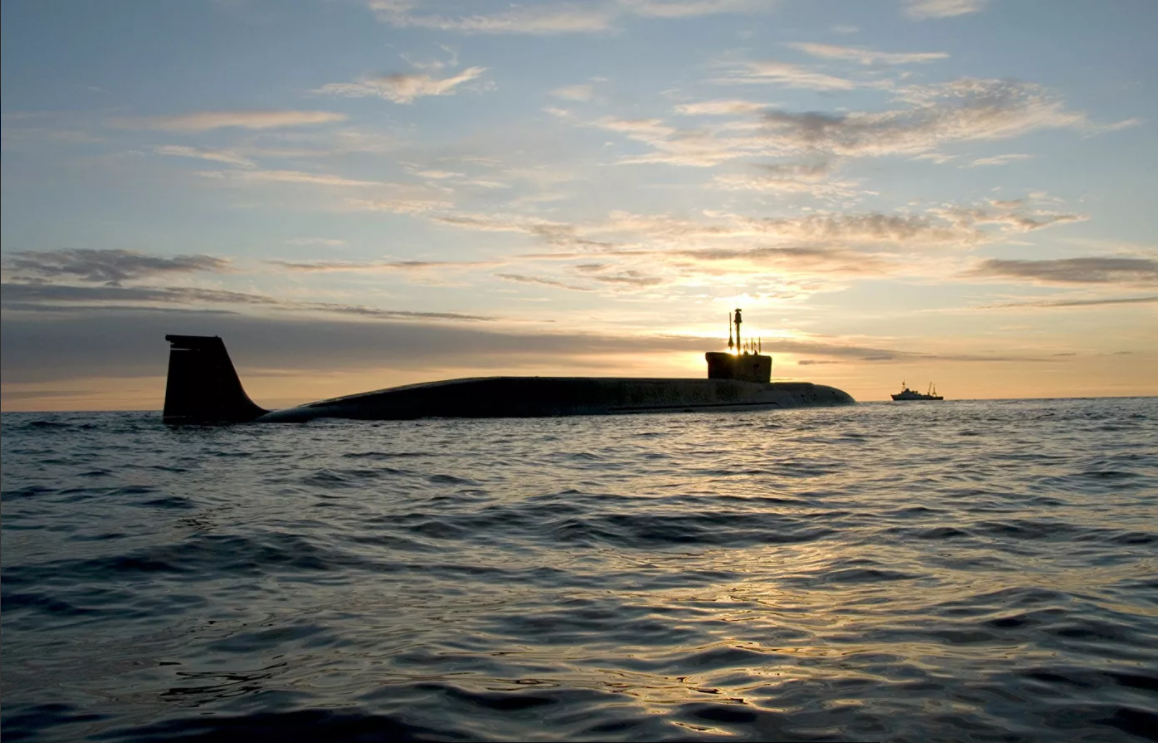
The Navy has created a new task group on the East Coast to ensure it has ready destroyers that can deploy on short notice to counter the Russian submarine threat in the Atlantic Ocean.
Task Group Greyhound – which officially declared initial operational capability on Sept. 1 – is a force-generation model for destroyers that is embedded within the Navy’s Optimized Fleet Response Plan.
The plan is to take destroyers that have recently completed deployments and are awaiting maintenance availabilities and make them ready for training and operations in the Atlantic.
Greyhound is “designed to provide the fleet with predictable, continuously ready and fully certified warships,” Rear Adm. Brendan McLane, the commander of Naval Surface Force Atlantic, said in a Monday ceremony aboard USS Thomas Hudner (DDG-116) in Mayport, Fla.
“The ships will be ready to accomplish the full range of missions – including tracking Russian undersea activity in the Atlantic and maritime homeland defense for our nation.”
The task force shares a name with the 2020 surface warfare movie “Greyhound,” in which a collection of allied destroyers defend a North Atlantic convoy from German U-boats.
USS Donald Cook (DDG-75) – which recently completed several years forward-deployed in Rota, Spain and is now based in Mayport – and Thomas Hudner are the first destroyers to become part of the task group. USS The Sullivans (DDG-68), which is currently deployed with the United Kingdom’s Queen Elizabeth Carrier Strike Group, will join the task group in January when it returns. USS Cole (DDG-67) and USS Gravely (DDG-107) will become part of Greyhound next year when Donald Cook begins its maintenance period.
“We took the two most capable ready-to-go destroyers – so Thomas Hudner, just back from an outstanding deployment and Donald Cook just finished five to six years forward-deployed naval force out of Rota – so both extremely experienced in anti-submarine warfare. And then we kind of mapped out the schedule for the other one to try to get to a stable schedule where you would have ultimately four to make two all the time,” McLane told reporters in a phone call after the ceremony.
“So USS The Sullivans will be coming back from deployment later on this year and then she’ll be joining, followed by two of the ships that are currently in the Harry S. Truman strike group that will be going on deployment and then [when] they come back, they will then be ready to join. So the idea is we put in the ships that already have deployments under their belt and are most ready and most experienced.”
The creation of the new task group comes as the Navy has refocused assets and efforts on the Atlantic region due to Russia’s undersea capability. The service formally reestablished U.S. 2nd Fleet, which covers the North Atlantic and East Coast, in 2018 amid concerns over Russian submarines operating in the waters.
The Russian Navy has developed next-generation attack submarines armed with long-range land-attack missiles with ranges of 1,000 miles or more. Moscow is also developing a new class of submarines that will field a school-bus-sized torpedo armed with a nuclear warhead.
The ships will be based out of Mayport and Norfolk, Va., and the task group is set for full operational capability by June 2022, according to McLane, who noted the ships will still have a post-deployment stand-down so sailors can see family after being out at sea.

“The strategic threat to the homeland has entered a new era and our key competitors have deployed and continue to advance a range of capabilities to hold the homeland at risk,” McLane said.
One goal is for the task group to streamline the schedules of different commands and naval communities so they can coordinate on training and exercises in the region.
“These will allow us to work with the schedules of not only the surface ships, but the submarines, the P-8 community, and the HSM, [Commander, Helicopter Sea Combat Wing Atlantic] helicopter detachments so that we can align everybody up to take advantage of whatever training opportunities may exist, as well as tactical development exercises like in the past Black Widow, and then training opportunities like submarine command course operations. We can align those assets to go after these training environments that may exist,” Rear Adm. Brian Davies, the commander of Submarine Group 2, told reporters.
McLane said work under Greyhound will include in-port training, live, virtual and constructive (LVC) training and time at sea.
For example, the Navy could take advantage of a submarine moving in and out of its homeport by pairing P-8 maritime patrol aircraft with helicopter detachments on destroyers for drills, Davies said.
“Having a dedicated platforms [sic] that Task Group Greyhound brings to the maritime homeland defense in the undersea domain … [what it] will help us do is really make that continuity between the training of the assets and then operating at high-end competitors in a dynamic environment brings that to fruition for us,” Davies said. “So instead of having to go out and find an asset to go and hunt say a high-end Russian submarine, we have these assets pre-assigned and they’re able to practice in this team-to-teams approach that we like to talk about when it comes to the arc of undersea warfare.”
The destroyers that join Greyhound will follow a model comparable to what the Navy uses for forward-deployed assets in Rota, Spain, according to McLane.
“We postpone major modernization efforts that usually take two years to install on a ship and we focus on the things that really have to get done in a 90- to 100-day period,” McLane said. “And then for our ships in the Task Group Greyhound, they’re going to execute that maintenance strategy in the short-term until we can go between long avail and long avail. That’s probably not going to be until [Fiscal Year] 27.”
“The idea is by between [Fiscal Years] 25 and 27, we’re going to have ships doing this for possibly two years at a time. So they’ll be part of the OFRP – but not deploying – but staying here and keeping” available for undersea warfare in the region, McLane said.
“But until we can get to that point, we’ll be taking ships that are coming back from deployment and using them for their sustainment phase – usually six months I think is fair to say it looks like until their maintenance availabilities start – and that’s kind of the startup scheduling.”





